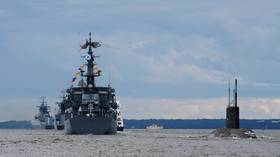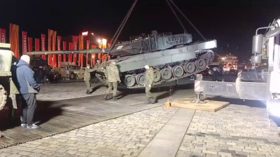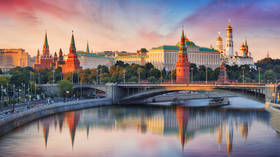Russia’s new naval doctrine: What you need to know
Moscow has updated the document in order to reflect the shifting global geopolitical and security landscape

Russian President Vladimir Putin on Sunday signed a revised naval doctrine that reflects the “change in the geopolitical and military-strategic situation in the world.” The updated policy paper outlines Moscow’s ambitions in the maritime sphere.
- Where do Russia’s national interests extend?
The revised doctrine explicitly states that Russia’s national interests “as a great naval power extend to the entire world’s oceans and the Caspian Sea,” a landlocked sea on Russia’s southern border. Moscow seeks to promote its interests based on “universally recognized principles and norms of international law,” while taking into consideration the interests of other nations. - What is seen as the main threat to Russia?
The document outlines multiple “challenges and threats” facing Russia in the naval sphere, largely related to the activities of Washington and its allies. Among the threats, the doctrine identifies “the strategic course of the US to dominate in the world oceans” and the encroachment of “NATO military infrastructure” toward the country’s borders. - What about overseas naval bases?
The document acknowledges the lack of overseas naval re-supply points and bases, which are crucial for expanding the operational range of the Russian Navy. However, the doctrine envisions the creation of such a facility in the Red Sea. - Will Russia get aircraft carriers?
The doctrine includes plans to construct a new shipbuilding facility in Russia’s Far East. The shipyard will be used to build “large-capacity vessels” including ships suitable “for the development of the Arctic,” as well as “modern aircraft carriers for the Navy.” Currently, Russia has only one aircraft-carrying naval vessel, the Admiral Kuznetsov cruiser, which has been out of commission and undergoing repairs for several years already. - Will there be a focus on the Arctic?
While the doctrine identifies multiple “regional branches” of its maritime policies, it appears to pay particular attention to the Arctic region. The document says that Russia recognizes the Arctic not only as an area for global economic competition but from the “military standpoint” as well. It envisions building up the country’s military capabilities in the region, exploiting offshore natural recourses, and further developing the Northern Sea Route to turn it into a “safe, year-round and globally competitive Russian national shipping route.” - What are the ‘important’ regions for Russia?
Apart from listing the “vital” regional areas for the country, such as the Arctic, Northern Sea Route, Caspian Sea and, generally, domestic waters and continental shelf areas, the doctrine also outlines what it calls “important” zones, which it defines as those that “significantly impact the economic development, the material wellbeing of the population and the national security” of the country. Such zones include the Azov and Black Seas and Eastern Mediterranean, as well as the straits near the Kuril Islands, and Baltic and Black Seas. The doctrine envisions building additional naval infrastructure in the Crimean peninsula and the southern Krasnodar Region, as well as expanding the Black Sea fleet overall. - What does the doctrine say about using military force?
Russia reserves the right to use military force to protect its maritime interests should all diplomatic options be exhausted, according to the document. ”In order to protect its national interests in the world oceans, Russia exercises its indisputable right to the presence of the naval forces and their use in strict accordance with the legislation of the Russian Federation, international treaties and international law,” the doctrine states.
You can share this story on social media:












